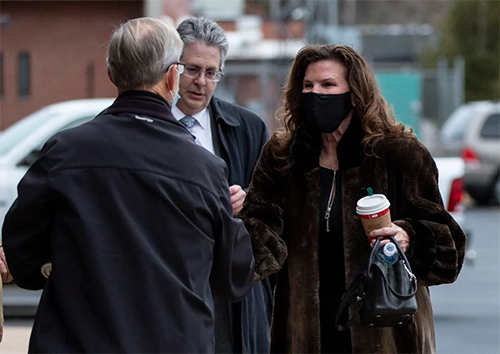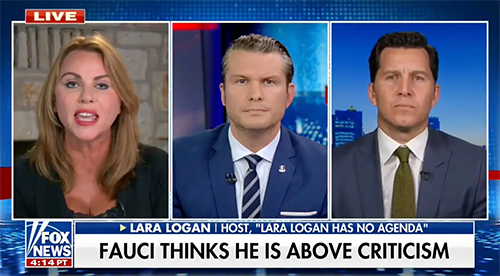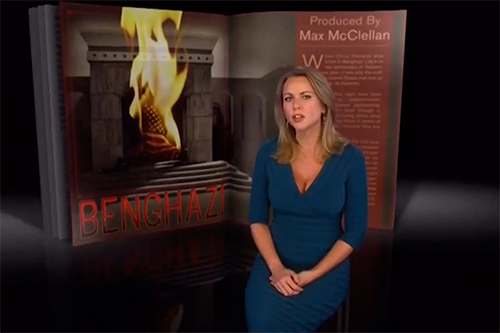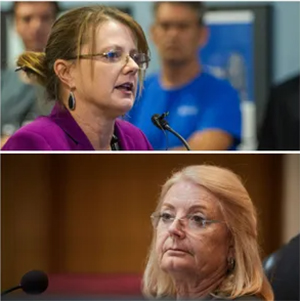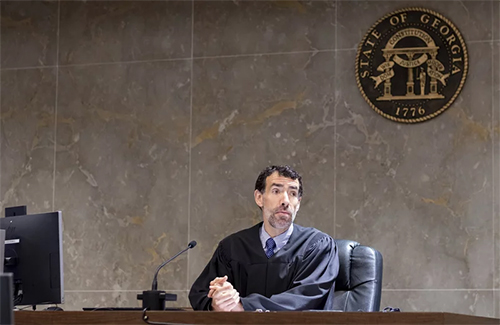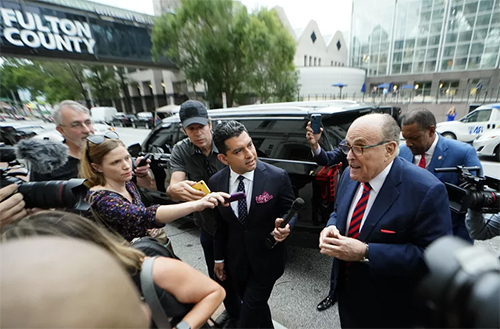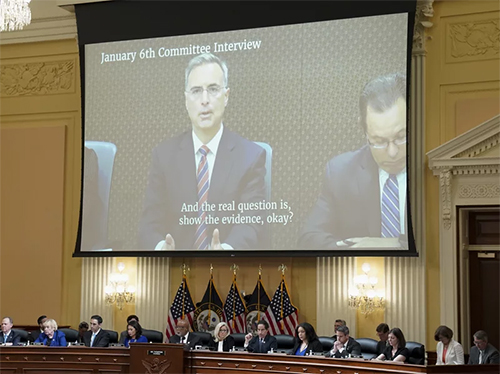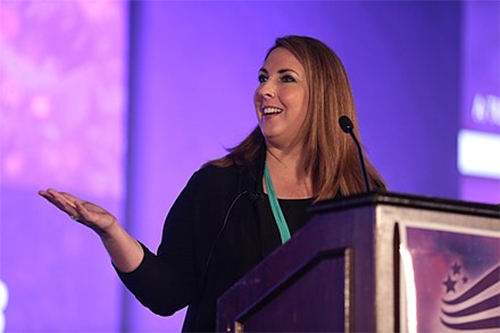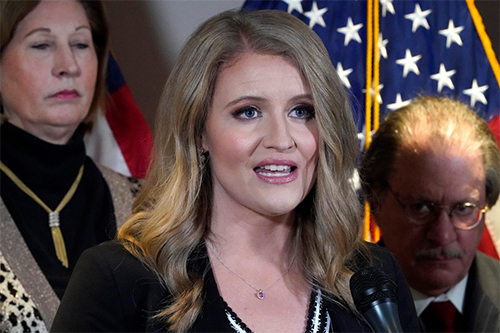Part 2 of 2
The Jury’s DecisionIn accordance with the Court’s instructions, which the jury is presumed to have followed,51 the jury made the following explicit findings based on its answers to the verdict form. On the sexual battery claim, the jury found that:
• Mr. Trump sexually abused Ms. Carroll.
• Mr. Trump injured her in doing so.
• “Mr. Trump’s conduct was willfully or wantonly negligent, reckless, or done with a conscious disregard of the rights of Ms. Carroll, or was so reckless as to amount to such disregard”.50
• Ms. Carroll was entitled to compensatory and punitive damages on the sexual battery claim of $2.02 million ($2 million in compensatory damages and $20,000 in punitive damages).
On the defamation claim, it found that:
• Mr. Trump’s October 12, 2022 statement was defamatory and false (i.e., “not substantially true”).
• Mr. Trump made that statement “with actual malice” – that is, that when he made the statement, Mr. Trump “knew that it was false”,“had serious doubts as to its truth”, or “had a high degree of awareness that the statement probably was false.”51
• “Ms. Carroll was injured as a result of Mr. Trump’s publication of the October 12, 2022 statement.”52
• “Mr. Trump acted maliciously, out of hatred, ill will, spite or wanton, reckless, or willful disregard of the rights of another.”53
• Ms. Carroll was entitled to $2.98 million in compensatory and punitive damages on the defamation claim relating to the October 12, 2022 statement ($1.7 million in compensatory damages for the “reputation repair program” only, $1 million in compensatory damages for damages other than the reputation repair program, and $280,000 in punitive damages).
DiscussionMr. Trump’s motion is addressed only to the jury’s damages awards, specifically its compensatory damages award for Ms. Carroll’s sexual battery claim, and its compensatory and punitive damages awards for the defamation claim. He does not challenge the Court’s instructions or the jury’s liability verdict. All of his arguments are unpersuasive.
The Legal StandardA “trial judge enjoys ‘discretion to grant a new trial if the verdict appears to [the judge] to be against the weight of the evidence,’ and . . . ‘[t]his discretion includes overturning verdicts for excessiveness and ordering a new trial without qualification, or conditioned on the verdict winner’s refusal to agree to a reduction (remittitur).’”56 “In considering motions for a new trial and/or remittitur, ‘[t]he role of the district court is to determine whether the jury’s verdict is within the confines set by state law, and to determine, by reference to federal standards developed under Rule 59, whether a new trial or remittitur should be ordered.’”57
“Ordinarily, a court should not grant a new trial ‘unless it is convinced that the jury has reached a seriously erroneous result or . . . the verdict is a miscarriage of justice.’ . . . Nevertheless, the standard for granting a new trial under Rule 59 is less stringent than the standard under Rule 50.”58 Specifically, unlike the standard on a Rule 50 motion, on a Rule 59 motion: “(1) a new trial . . . may be granted even if there is substantial evidence supporting the jury’s verdict, and (2) a trial judge is free to weigh the evidence himself, and need not view it in the light most favorable to the verdict winner.”59 “A court considering a Rule 59 motion for a new trial must bear in mind, however, that the court should only grant such a motion when the jury’s verdict is egregious. Accordingly, a court should rarely disturb a jury’s evaluation of a witness’s credibility.”60
With respect to determining whether the jury’s damages awards come within the confines of state law, “[ u]nder New York law, a court ‘shall determine that an award is excessive or inadequate if it deviates materially from what would be reasonable compensation.’”61 “To determine whether a jury award is excessive within the meaning of [New York Civil Practice Law and Rules] § 5501(c), New York courts compare it with awards in similar cases.”62 The relevant standard “is not whether an award deviates at all from past awards – it is whether an award deviates materially from reasonable compensation.”63
Compensatory Damages - Sexual Battery Claim
Mr. Trump Digitally and Forcibly Penetrated Ms. Carroll’s VaginaMr. Trump argues that the Court should grant a new trial or remittitur with respect to the jury’s award of compensatory damages for Ms. Carroll’s sexual battery claim chiefly on the ground that “the [j]ury found that [Ms. Carroll] was not raped but was sexually abused by [Mr. Trump] during the 1995/96 Bergdorf Goodman incident.”64 According to Mr. Trump, “[s]uch abuse could have included groping of Plaintiff’s breasts through clothing or similar conduct, which is a far cry from rape. Therefore, an award of $2 million for such conduct, which admittedly did not cause any diagnosed mental injury to Plaintiff, is grossly excessive under the applicable case law.”65 Mr. Trump’s argument is incorrect at every step.
First, the definition of “rape” in the New York Penal Law – which the jury was obliged to apply in responding to Question 1 on the verdict form – requires forcible penetration of the victim’s vagina by the accused’s penis.66 Accordingly, the jury’s negative answer to Question 1 means only that the jury was unpersuaded that Mr. Trump’s penis penetrated Ms. Carroll’s vagina. It does not mean that he did not forcibly insert his fingers into her – that he “raped” her in the broader sense of that word which, as discussed above, includes any penetration by any part of an accused’s body (including a finger or fingers) or any other object.67
Second, Mr. Trump’s argument ignores the fact that the verdict in this case was a special verdict governed by Rule 49 of the Federal Rules of Civil Procedure. The form of the verdict, including the fact that it did not ask the jury to decide exactly what conduct Mr. Trump committed in the event it found for Ms. Carroll as to sexual abuse – was approved by Mr. Trump as well as by Ms. Carroll.68 In these circumstances,
“A party waives the right to a jury trial on any issue of fact raised by the pleadings or evidence but not submitted to the jury unless, before the jury retires, the party demands its submission to the jury. If the party does not demand submission, the court may make a finding on the issue. If the court makes no finding, it is considered to have made a finding consistent with its judgment on the special verdict.”69
Neither party made any such demand here. So the jury (or the Court) is deemed to have made a finding in accord with the judgment on the special verdict unless the Court makes a contrary finding.70 In other words, the jury is deemed to have found that the specific conduct in which Mr. Trump actually engaged was such that the damages award was justified provided the evidence permitted such a finding.71 And for reasons discussed in greater detail below, the evidence of the attack generally coupled with forcible digital penetration of Ms. Carroll justified the damages awarded regardless of the jury’s finding adverse to Ms. Carroll on the New York Penal Law rape question.
Ms. Carroll testified that the sexual assault – the “rape” – of which she accused Mr. Trump involved especially painful, forced digital penetration, which as recounted above she described graphically and emphatically to the jury.
The testimony of the outcry witnesses, Mss. Birnbach and Martin, corroborated the essence of Ms. Carroll’s account of a violent, traumatic sexual assault. Ms. Leeds’s testimony that Mr. Trump attacked her, culminating in putting his hand on her leg and up her skirt, suggests that Mr. Trump has a propensity for attempting forcibly to get his hands on and into women’s sexual organs. Mr. Trump’s own words from the Access Hollywood tape and from his deposition – that (a) stars “[ u]nfortunately or fortunately” “c[ould] do anything” they wished to do to women, including “grab[bing] them by the pussy” and (b) he considers himself to be a “star” – could have been regarded by the jury as a sort of personal confession as to his behavior. Thus, there was ample, arguably overwhelming evidence, that Mr. Trump forcibly digitally penetrated Ms. Carroll, thus fully supporting the jury’s sexual abuse finding.
Mr. Trump’s attempt to minimize the sexual abuse finding as perhaps resting on nothing more than groping of Ms. Carroll’s breasts through her clothing is frivolous. There was no evidence whatever that Mr. Trump groped Ms. Carroll’s breasts, through her clothing or otherwise. The only evidence of bodily contact between Mr. Trump and Ms. Carroll other than the digital and alleged penile penetration was Ms. Carroll’s testimony that Mr. Trump (a) “shoved” and “thrust” her against the wall, (b) “put his shoulder against [her] and h[eld] [her] against the wall,” (c) “his whole weight came against [her] chest and held [her] up there,” (d) he “pulled down [her] tights,” (e) her “arm was pinned down” while she pushed him back, and (f) “he put his mouth against [hers].” The jury was instructed that one of the essential elements of sexual abuse under the New York Penal Law is “sexual contact,” defined as “touching of the sexual or intimate parts.” None of these actions, other than putting his mouth against hers and perhaps pulling down her tights, was sexual contact.72
The jury’s finding of sexual abuse therefore necessarily implies that it found that Mr. Trump forcibly penetrated her vagina. And since the jury’s answer to Question 1 demonstrates that it was unconvinced that there was penile penetration, the only remaining conclusion is that it found that Mr. Trump forcibly penetrated her vagina with his fingers –
in other words, that he “raped” her in the sense of that term broader than the New York Penal Law definition. And this conclusion is fully supported by Ms. Carroll’s repeated and clear testimony on the digital penetration (more than the penile penetration), Dr. Lebowitz specifically mentioning Ms. Carroll squirming in response to an intrusive memory of Mr. Trump’s fingers in her vagina, and the evidence at trial taken as a whole. It also is bolstered by the amount of the jury’s verdict.
The Jury’s $2 Million Damages Award Is Not ExcessiveThe trial evidence of the harm to Ms. Carroll as a result of being assaulted and digitally raped supports the jury’s $2 million award as reasonable compensation for her pain and suffering. Ms. Carroll testified in detail with respect to the physical, emotional, and psychological injury she suffered after the incident with Mr. Trump. She expressed that in “the seconds, the minutes following [the assault] . . . my overwhelming thought was I had died and was somehow still alive.”73 She testified that when she called Ms. Birnbach immediately after the assault, “I had not processed it. I had not processed what was going on. I felt the hand jammed, and I felt the back of my head hurting.”74 The night of the assault, she testified “[m]y head hurt, my vagina felt pain ... .”75 In relation to the specific act of being digitally raped, Ms. Carroll testified that it was “extremely painful,” “a horrible feeling,” “unforgettable,” and that the day after the assault she “felt [her] vagina still hurt from his fingers.”76 She testified also about not being able to maintain a romantic relationship or have sex for the past two decades since the “very violent” incident with Mr. Trump and about experiencing “visions” or “sudden intrusions” which she has “had . . . ever since the attack” and that “would absolutely take over [her] brain.”77 These visions included her “feel[ing] Donald Trump again on top of [her] . . . [she] thought for a minute [she] was going to die because [she] couldn’t breathe” and while going about her day “in would slide just a picture of him going like this into the dressing room or hitting [her] head or feeling his fingers jammed up inside of [her].”78 Ms. Carroll’s testimony and Dr. Lebowitz’s testimony, which is summarized above, of the long-lasting emotional and psychological trauma that Ms. Carroll experienced as a result of the incident with Mr. Trump demonstrate that the jury’s $2 million award was motivated not by sympathy, but by competent evidence of harm to Ms. Carroll.
In view of the jury’s implicit finding that Mr. Trump digitally raped Ms. Carroll, Mr. Trump’s argument and references to examples of damages awards “in the ‘low six-figure range’” where a plaintiff’s “intimate parts were groped by a defendant” plainly are irrelevant.79 Many of the cases Mr. Trump cites are distinguishable also for the reasons identified by Ms. Carroll.80 To be sure, there are New York cases in which plaintiffs who were sexually assaulted and/or raped were awarded lower damages than was Ms. Carroll.81 There also, however, are cases with facts and injuries comparable to those here in which plaintiffs were awarded similar or higher compensatory damages.82 “Although a review of comparable cases is appropriate,” the Court “need not average the high and low awards; [it may] focus instead on whether the verdict lies within the reasonable range.”83 It accordingly suffices for present purposes that the jury’s award of $2 million falls within a reasonable range of the amounts awarded to plaintiffs in comparable sexual assault and rape cases.
In these circumstances, and based on all of the evidence presented at trial, the jury’s compensatory damages award to Ms. Carroll for her sexual battery claim did not deviate materially from reasonable compensation so as to make it excessive under New York law.
Compensatory Damages - Defamation ClaimMr. Trump argues that “the general compensatory damages for the defamation claim should be no more than $100,000, and no more than $368,000 (the low estimate provided by Professor Humphreys) for the reputation repair campaign.”84 He contends that the jury’s awards should be reduced to these amounts because “the jury awards in this case for these categories of damages were speculative and based upon alleged harms caused by the June 2019 statements.”85 He makes eleven specific arguments, at least seven of which are based on challenges to the testimony of Professor Humphreys, Ms. Carroll’s defamation damages expert. None ultimately is persuasive.
Professor Humphreys’s TestimonyMr. Trump makes the following challenges to Professor Humphreys’s testimony:
1. “Professor Humphreys testified about the purported harm arising from the June 2019 Statements and even compared Plaintiff’s reputation before the June 2019 Statements and after the October 12, 2022 Statement, but did not do a comparison between her reputational harm before and after the October 12, 2022 Statement. . . . Therefore, Professor Humphreys must have included the alleged harm from the June 2019 Statements as part of her damages analysis.”
2. “Professor Humphreys testified that she could not narrow her estimate as to how many times the October 12, 2022 Statement was viewed on Truth Social [(Mr. Trump’s social media platform)] and Twitter to anything more specific than somewhere ‘between 1.5 million and 5.7 million times,’ which is an error rate of 74%. . . . Such an analysis is thus pure speculation.”
3. “Professor Humphreys testified that the people who read and believed the October 12, 2022 Statement were ‘republicans [who] typically believe Mr. Trump.’ . . . Consequently, Professor Humphreys did not take into consideration the fact that Trump’s supporters likely would never have supported or believed Plaintiff regardless of the October 12, 2022 Statement, and that Plaintiff’s reputation with such supporters would not have changed due to such statement.”
4. “Professor Humphreys testified that in order to repair Plaintiff’s reputation with such Trump supporters, Plaintiff would have to pay for the cost of a reputation repair campaign, which is ‘a campaign to put out positive messages about’ Plaintiff. . . . However, Professor Humphreys did not explain how existing Trump supporters would have changed their minds about Plaintiff from merely seeing positive messages about Plaintiff. Professor Humphreys also testified that she has never done a reputation repair campaign before, and thus, her opinion on this issue should be given little weight.”
5. “Professor Humphreys testified that (a) the June 2019 Statements already existed as of the October 12, 2022 Statement, and that readers of the June 2019 Statements likely would not have changed their minds about the rape allegation after reading the October 12, 2022 Statement . . . and (b) she does not know if the people who believed the October 12, 2022 Statement had already made up their minds about Plaintiffs rape allegation from reading the June 2019 Statements. . . . Therefore, Professor Humphreys’s testimony about changing the minds of Trump supporters (the target of the reputation repair campaign) is pure speculation. Additionally, her testimony only supports the argument that the October 2022 Statement did not cause Plaintiff any harm in addition to any harm that was caused by the June 2019 Statements, because people already had made up their minds as to the veracity of Plaintiffs accusations as of the June 2019 Statements.”
6. “Professor Humphreys’s cost estimate for such a campaign was equally based upon pure conjecture in that she estimated that it would cost anywhere from $368,000 to $2.7 million . . . , which is an error rate of 86 percent. This is especially troublesome since Professor Humphreys testified that she has never done a reputation repair campaign before.”
7. “Professor Humphreys also testified that she did not analyze any of Plaintiffs numerous media appearances where Plaintiff enhanced her reputation with regard to her allegations against Defendant. . . . In fact, Plaintiff conceded that she received a vast amount of positive support from the public after making her accusation against Defendant. . . . Even though Professor Humphreys admitted that Plaintiff received positive support from the public after the rape allegation, she did not factor such support into her analysis of the harm allegedly caused by the October 12, 2022 Statement. . . . Accordingly, her analysis of reputational harm is pure speculation.”86
Ms. Carroll points out that Mr. Trump’s arguments concerning Professor Humphreys “get at the core of Professor Humphreys’s reliability as an expert, something Trump could have challenged under Federal Rule of Evidence 702 [(which governs the admissibility of expert testimony)] or raised on cross-examination.”87 His failure to do so, she contends, waived his present complaints. Mr. Trump counters, however, that his challenges are timely because they go to the weight, not the admissibility, of Professor Humphreys’s testimony and because he preserved the issues by raising them on cross examination at trial.88 Thus, there is a threshold question with respect to whether Mr. Trump waived those arguments in relation to Professor Humphreys’s testimony by failing to raise them previously, as a Rule 59 motion generally is not a proper vehicle to raise new arguments or legal theories.89
On reflection, the Court concludes that Mr. Trump’s arguments listed above go primarily to the weight, rather than the admissibility, of Professor Humphreys’s testimony. “Generally, arguments that the assumptions relied on by an expert are unfounded go to the weight rather than the admissibility of the evidence.”90 Most of Mr. Trump’s arguments concern certain assumptions Professor Humphreys made or did not make in forming her expert opinion (e.g., whether she included the alleged harm from the 2019 statements in her analysis, whether and how she considered Mr. Trump’s supporters who viewed his 2022 statement, and whether she took into account Ms. Carroll’s media appearances). The Court therefore considers Mr. Trump’s challenges to Professor Humphreys’s testimony as having been timely raised.91 Nevertheless, Mr. Trump’s arguments are unavailing on the merits.
His contention that Professor Humphreys “did not do a comparison between [Ms. Carroll’s] reputational harm before and after the October 12, 2022 Statement” and she therefore “must have included the alleged harm from the June 2019 Statements as part of her damages analysis” is contradicted by the record. Professor Humphreys testified that in her analysis, although she “noticed . . . that those meetings [(public statements of negative associations with Ms. Carroll)] existed after June 2019, . . . the frequency of the posting with those associations had started to decline. However, after the statement on October 12th, the frequency of the negative associations, the volume of them again escalated.”92 She testified also that she “only looked at the reputational harm from the October 12[, 2022] statement” and that the cost she estimated to repair Ms. Carroll’s reputation following Mr. Trump’s 2019 statements – the subject of Carroll I – was “higher” than the cost she estimated to repair Ms. Carroll’s reputation following the 2022 statement.93 Moreover, to remove any doubt, the Court specifically instructed the jury that “the question of whether there was any adverse effect by virtue of the 2019 statements and, if there was, how much adverse effect is not at issue in this case. It is not for you to determine.”94 There accordingly is no basis to assume that the jury award for the 2022 statement improperly included damages for the 2019 statements.
Mr. Trump’s remaining challenges to Professor Humphreys’s testimony similarly fail to support his argument for a new trial on or a reduction in the damages. Professor Humphreys’s testimony was not “pure speculation” because she “did not analyze any of Plaintiffs numerous media appearances where Plaintiff enhanced her reputation with regard to her allegations against Defendant.” Professor Humphreys testified that “in terms of reputation,” the “positive responses or comments [do not] offset negative responses.”95 She explained: “if you imagine, like, at the place where you work, if 20 percent of your colleagues think that you stole money where you work, let’s say you have a hundred colleagues and 20 of them think that you stole money, that still has an impact on your work life and your day-to-day reputation, and so I think that 20 percent is still important.”96
Nor are his arguments that Professor Humphreys “did not take into consideration the fact that Trump’s supporters [who read and believed the 2022 statement] likely would never have supported or believed Plaintiff regardless of the [2022 statement]” and “did not explain how existing Trump supporters [or people who had made up their minds already based on the 2019 statements] would have changed their minds about Plaintiff” through her proposed reputation repair program grounds to minimize the weight of her testimony. Mr. Trump’s counsel cross examined Professor Humphreys on these points. Professor Humphreys explained that in her view, it is “very likely that [the 2022 statement] was seen by some new people.”97
The jury considered all of Professor Humphreys’s testimony, including the purported flaws Mr. Trump’s counsel attempted to draw out on cross examination and in summation, and determined that her testimony still was worthy of sufficient weight to reach the $1.7 million it awarded for the reputation repair program. None of Mr. Trump’s challenges to that testimony, considered separately or collectively, supports a determination that the jury’s compensatory damages award was seriously erroneous, egregious, or against the weight of the evidence.
Mr. Trump’s Other Arguments and Awards in Comparable Defamation CasesMr. Trump’s other objections to the jury’s compensatory damages award for Ms. Carroll’s defamation claim are without merit. He contends that the jury’s award was excessive because:
“[T]he overall essence of Plaintiff’s defamation claim was that Defendant allegedly defamed Plaintiff when he denied her rape allegation. . . . [T]he Jury found that Defendant did not rape Plaintiff, and thus, the portions of the defamation claim based upon an alleged rape failed. Accordingly, all that was left of Plaintiff’s defamation claim was that Defendant defamed Plaintiff by stating that ‘he has no idea who Carroll was[,]’ . . . which is far less damaging to Plaintiff’s reputation than accusing Plaintiff of lying about the alleged rape.”98
His argument is grounded entirely on false premises.
The crux of Ms. Carroll’s defamation claim was that Mr. Trump defamed her by stating that she lied about him sexually assaulting her in order to increase sales of her new book or for other inappropriate purposes. Her claim, as noted above, never was limited to the specific definition of “rape” in the New York Penal Law, which requires penile penetration. Nor was any specific “portion[] of the defamation claim based upon an alleged rape.” Mr. Trump did not deny specifically “raping” Ms. Carroll or specifically penetrating her with his penis as opposed to with another body part in his 2022 statement. He instead accused her of lying about the incident as a whole, of “completely ma[king] up a story” that was a “Hoax and a lie.”99 There is thus no factual or legal support for Mr. Trump’s made-up version of Ms. Carroll’s defamation claim.100
Mr. Trump argues also that the jury’s damages award deviates materially from the compensatory damages awards in other defamation cases in New York. Similar to the review of damages awards in sexual assault and rape cases, there certainly are cases – including those cited by Mr. Trump – in which plaintiffs in defamation cases in New York received compensatory damages awards considerably lower than the amount awarded to Ms. Carroll.101 The facts of those cases, however, were materially different from the facts and evidence in this case. In many of those cases, the defamatory statements were published in far less public forums (e.g., a “local newspaper”),102 and none involved the scale of attention and influence commanded when the defendant in this case chooses to speak publicly. The cases Mr. Trump cites “do not compare in the slightest to being defamed by one of the loudest voices in the world, in a statement read by millions and millions of people, which described you as a liar, labeled your account of a forcible sexual assault a ‘hoax,’ and accused you of making up a horrific accusation to sell a ‘really crummy book.’”103 And, as Ms. Carroll cites, there are cases in New York in which defamation plaintiffs have been awarded compensatory damages higher than the amount awarded to Ms. Carroll, demonstrating that the jury’s award here is not excessive and falls within the range of reasonable compensation.104
Mr. Trump accordingly has failed to meet his burden of demonstrating that a new trial or remittitur is warranted on the jury’s compensatory damages award for Ms. Carroll’s defamation claim.
Punitive Damages - Defamation ClaimLastly, Mr. Trump argues that the jury’s $280,000 punitive damages award for Ms. Carroll’s defamation claim violated due process principles. He principally argues that the punitive damages award for Ms. Carroll’s defamation claim should be no more than $5,000 because his conduct with regard to the 2022 statement is “barely reprehensible, if at all, because he was defending himself against a false accusation of rape.”105 “The Supreme Court [has] outlined three ‘guideposts’ to facilitate its review of state court punitive damage awards: (1) the degree of reprehensibility of the defendant’s conduct, (2) the ratio of punitive damages to the actual harm inflicted, and (3) ‘the difference between this remedy and the civil penalties authorized or imposed in comparable cases.’”106 Mr. Trump’s argument plainly is foreclosed by the analysis set forth above and by the Court’s determination that the jury implicitly found Mr. Trump did in fact digitally rape Ms. Carroll.
Moreover, the evidence presented at trial and the jury’s findings that Mr. Trump made the 2022 statement knowing that it was false (or with reckless disregard of its truth or falsity) and with deliberate intent to injure or out of hatred, ill will, or spite or with willful, wanton or reckless disregard of another’s rights firmly establish the high reprehensibility of Mr. Trump’s defamatory statement. In these circumstances, the jury's $280,000 punitive damages award was not excessive and did not violate due process.
I have considered Mr. Trump's other arguments and found them all unpersuasive.
ConclusionThe jury in this case did not reach "a seriously erroneous result." Its verdict is not "a miscarriage of justice." Mr. Trump's motion for a new trial on damages or a remittitur (Dkt 204) is denied.
Dated:
SO ORDERED.
July 19, 2023
Lewis A. Kaplan
United States District Judge
_______________
Notes:1 “Sexual abuse” involving sexual contact by forcible compulsion (sexual abuse in the first degree) nevertheless is a felony punishable by a term of imprisonment and requiring sex offender registration. N.Y. Penal Law §§ 70.02(1)(c) (sexual abuse in the first degree is a Class D violent felony), 3(c) (“For a class D felony, the term must be at least two years and must not exceed seven years . . ..”); N.Y. Correct. Law §§ 168-a(3)(a)(i) (defining “[s]exually violent offense” to include a conviction of sexual abuse in the first degree), 7(b) (defining “[s]exually violent offender” as “a sex offender who has been convicted of a sexually violent offense defined in subdivision three of this section”).
2 One dictionary, for example, defines rape as “unlawful sexual intercourse or any other sexual penetration of the vagina, anus, or mouth of another person, with or without force, by a sex organ, other body part, or foreign object, without the consent of the person subjected to such penetration.” “[R]ape,” Dictionary.com,
https://www.dictionary.com/br owse/rape (last accessed July 14, 2023) (emphasis added). The most recent edition of Black’s Law Dictionary defines rape in part as “[u]nlawful sexual activity (esp. intercourse) with a person (usu[ally] a female) without consent and usu[ally] by force or threat of injury” and it defines “intercourse” in the sexual sense as “[p]hysical sexual contact, esp. involving the penetration of the vagina by the penis.” Black’s Law Dictionary 966, 1511 (11th ed. 2019).
3 E.g., 10 U.S.C. § 920(g)(1)(C) (Uniform Code of Military Justice) (defining “sexual act” for purposes of rape and sexual assault as, inter alia, “the penetration, however slight, of the vulva or penis or anus of another by any part of the body or any object, with an intent to abuse, humiliate, harass, or degrade any person or to arouse or gratify the sexual desire of any person”) (emphasis added); WAYNE R. LAFAVE, SUBST. CRIM. L., § 17.2(a) & n. 43 (3d ed.) (“In recent years, revision of rape laws have often brought about coverage of a broader range of conduct than is encompassed within the common law term ‘carnal knowledge.’... As for the acts covered, the new statutes ‘fall into three categories: those that continue the narrow notion that rape should punish only genital copulation; those that agree with the Model Code that rape laws should be expanded to include anal and oral copulation; and those that go beyond the Model Code to include digital or mechanical penetration as well as genital, anal, and oral sex.”) (emphasis added) (citing state statutes).
In fact, “rape” as defined in the relevant part of the New York Penal Law – forcible, unconsented-to penetration of the vagina by a penis – constitutes “sexual assault” under the Code of Criminal Justice of the State of New Jersey. N.J. Stat. Ann. §§ 2C:14-2c.(1) (“[a]n actor is guilty of sexual assault if the actor commits an act of sexual penetration with another person” and does so “using coercion or without the victim’s affirmative and freely-given permission”) and 2C:14-1c (“‘Sexual penetration’ means vaginal intercourse, cunnilingus, fellatio or anal intercourse between persons or insertion of the hand, finger or object into the anus or vagina either by the actor or upon the actor’s instruction.”). New Jersey, like some other states, does not statutorily define any crime as “rape.” As indicated by the foregoing, New Jersey’s penal code – unlike New York’s – treats digital and other modes of penetration in the same manner as penile penetration.
4 The American Psychological Association, for example, defines rape as “the nonconsensual oral, anal, or vaginal penetration of an individual by another person with a part of the body or an object, using force or threats of bodily harm or taking advantage of the individual’s inability to give or deny consent. U.S. laws defining rape vary by state, but the crime of rape is no longer limited to . . . vaginal penetration . . . .” APA Dictionary of Psychology, “Rape,” AMERICAN PSYCHOLOGICAL ASSOCIATION,
https://dictionary.apa.org/rape (last accessed July 14, 2023) (emphasis added).
The United States Attorney General announced in January 2012 a new definition of rape for the purpose of the Federal Bureau of Investigation’s Uniform Crime Report Summary Reporting System by, among other changes, “recogniz[ing] that rape with an object can be as traumatic as penile/vaginal rape.” U.S. Department of Justice, An Updated Definition of Rape, Jan. 6, 2012,
https://www.justice.gov/archives/opa/bl ... ition-rape (new definition of “rape” as “[t]he penetration, no matter how slight, of the vagina or anus with any body part or object, or oral penetration by a sex organ of another person, without the consent of the victim”) (emphasis added).
5 The jury awarded Ms. Carroll $20,000 in punitive damages, in addition to the $2 million in compensatory damages.
6 Dkt 205 (Def. Mem.) at 1.
7 E. Jean Carroll, Hideous Men: Donald Trump assaulted me in a Bergdorf Goodman dressing room 23 years ago. But he’s not alone on the list of awful men in my life, THE CUT, NEW YORK MAGAZINE, Jun. 21, 2019,
https://www.thecut.com/2019/06/donald-trump -assault-e-jean-carroll-other-hideous-men.html (emphasis added).
8 Dkt 187 (Trial Tr.) at 177:22-181:23 (emphasis added).
9 Dkt 189 (Trial Tr.) at 406:5-18 (emphasis added).
10 Dkt 187 (Trial Tr.) at 186:4-19.
11 Id. at 190:5-20.
12 Dkt 193 (Trial Tr.) at 688:5-690:9 (emphases in original).
13 Dkt 197 (Trial Tr.) at 1028:22-1032:6 (emphases in original).
14 The testimony of Mss. Leeds and Stoynoff was received pursuant to Federal Rule of Evidence 415, which provides that “evidence that the [defendant] committed any other sexual assault” may be admitted in “a civil case involving a claim for relief based on a party’s alleged sexual assault.” Fed. R. Evid. 415(a). The Court’s analysis is contained in a prior decision and need not be repeated here. Carroll v. Trump, No. 20-CV-7311 (LAK), 2023 WL 2441795 (S.D.N.Y. Mar. 10, 2023).
15 Dkt 193 (Trial Tr.) at 741:13-742:6 (emphasis added).
16 Id. at 771:19-772:8 (emphasis added).
17 Id. at 774:24-775:2, 775:13-16.
18 Id. at 787:6-14 (emphasis added).
19 Dkt 195 (Trial Tr.) at 989:24-996:7 (emphasis added).
20 Like the testimony of Mss. Leeds and Stoynoff, the Court initially determined that the Access Hollywood tape was admissible on the ground that a jury reasonably could find it was evidence that Mr. Trump “committed any other sexual assault” pursuant to Rule 415. Carroll, 2023 WL 2441795 at *3-4. At trial, however, it became clear that reliance on Rule 415 was unnecessary because the video was offered for a purpose other than to show the defendant’s propensity to commit sexual assault. Instead, it was offered – as Ms. Carroll’s counsel argued in rebuttal summation – as “a confession.” Dkt 199 (Trial Tr.) at 1403:24. Given that Mr. Trump states in the video that he “just start[s] kissing” women without “even wait[ing]” and that a “star” (such as himself) could “grab [women] by the pussy,” it “has the tendency to make [the] fact [of whether he sexually assaulted Ms. Carroll] more or less probable than it would be without the evidence” because one of the women he referred to in the video could have been Ms. Carroll. Fed. R. Evid. 401. See also, e.g., United States v. Cordero, 205 F.3d 1325 (2d Cir. 2000) (unpublished opinion) (“Proof of similar acts may be admitted so long as such evidence is offered ‘for any purpose other than to show a defendant’s criminal propensity.’”) (citation omitted); Woolfolk v. Baldofsky, No. 19-CV-3815(WFK) (ST), 2022 WL 2600132, at *2 (E.D.N.Y. July 8, 2022) (“Evidence of prior crimes, wrongs, or acts, however, may be admissible if offered ‘for any purpose other than to show a defendant’s criminal propensity, as long as the evidence is relevant and satisfies the probative-prejudice balancing test of Rule 403.’”) (citation omitted). Accordingly, the Court did not include the Access Hollywood tape in its instructions to the jury on the evidence of Mr. Trump’s alleged sexual assaults of other women, and neither party objected to its exclusion from that portion of the charge.
21 Dkt 138-1 (Def. Dep. Designations) at 174:5-175:4 (emphasis added).
21 Dkt 193 (Trial Tr.) at 829:22-830:2.
22 Dkt 195 (Trial Tr.) at 853:13-15.
23 Id. at 876:2-4.
24 Id. at 861:8-19.
25 Id. at 864:19-865:12.
26 Id. at 888:10-20 (emphasis added).
28 Dkt 189 (Trial Tr.) at 322:6-324:5.
29 Id. at 329:2-7.
30 Dkt 138-1 (Def. Dep. Designations) at 134:13.
31 Id. at 137:14-17.
32 Dkt 197 (Trial Tr.) at 1114:2-8.
33 Id. at 1127:24-25, 1128:16-19.
34 Id. at 1130:9-12.
35 Id. at 1130:18-22.
36 Id. at 1130:25-1131:3.
37 Id. at 1134:16-19.
38 Id. at 1136:10-13.
39 Id. at 1142:11-20.
40 Fed. R. Civ. P. 49(a)(1).
41 Fed. R. Civ. P. 49(a)(2).
42 Dkt 174 (Verdict) at 1.
43 Dkt 201 (Trial Tr.) at 1416:1-9.
44 It was necessary to obtain findings under the New York Penal Law definitions because the timeliness of the battery claim under the Adult Survivors Act depended on such findings. N.Y. CPLR § 214-j.
45 Dkt 201 (Trial Tr.) at 1416:18-1418:2 (emphasis added).
46 Id. at 1418:3-1420:8 (emphasis added).
47 Id. at 1422:17-1423:25.
Question 5 on punitive damages asked whether Ms. Carroll proved by a preponderance of the evidence that Mr. Trump’s conduct was willfully or wantonly negligent, reckless, or done with a conscious disregard of the rights of Ms. Carroll, or was so reckless as to amount to such disregard. If so, it asked how much Mr. Trump should pay to Ms. Carroll in punitive damages. Given that Mr. Trump does not dispute the jury’s $20,000 award in punitive damages for Ms. Carroll’s battery claim, the Court’s instructions on this question need not be reproduced here.
48 Id. at 1430:17-1432:3 (emphasis added).
49 Id. at 1432:25-1434:7.
50 Id. at 1434:17-1436:10.
51 E.g., United States v. Salameh, 152 F.3d 88, 116 (2d Cir. 1998).
50 Dkt 174 (Verdict) at 2 (emphasis added).
51 Dkt 201 (Trial Tr.) at 1432:1-3 (emphasis added).
52 Dkt 174 (Verdict) at 3 (emphasis added).
53 Id. (emphasis added).
56 Lore v. City of Syracuse, 670 F.3d 127, 176–77 (2d Cir. 2012) (alterations in original) (quoting Gasperini v. Center for Humanities, Inc., 518 U.S. 415, 433 (1996)).
57 Stampf v. Long Island R. Co., 761 F.3d 192, 204 (2d Cir. 2014) (quoting Gasperini, 518 U.S. at 435).
58 Mono v. Peter Pan Bus Lines, Inc., 13 F. Supp. 2d 471, 475 (S.D.N.Y. 1998) (quoting Smith v. Lightning Bolt Productions, Inc., 861 F.2d 363, 370 (2d Cir.1988)).
In Mono, the Court identified “an unresolved Erie issue – whether the state or federal standard of review applies in a motion for a new trial in a diversity action. New York law does not distinguish between a motion for a new trial and a motion for a judgment notwithstanding the verdict. . . . Thus, if state law applies to defendants’ Rule 59 motion, the standard of review would be whether the jury could have reached its verdict on ‘any fair interpretation of the evidence.’” Id. at 475, n.2 (citations omitted). However, as in Mono, “[b]ecause the evidence presented at trial [in Carroll II] satisfies both the federal and state standards, I need not determine which jurisdiction’s law controls [Mr. Trump’s] motion for a new trial.” Id.
59 Iverson v. Surber, No. 13-CV-633 (RA), 2018 WL 6523176, at *1 (S.D.N.Y. Nov. 13, 2018), aff’d, 800 F. App’x 50 (2d Cir. 2020) (citation omitted).
60 Id. (quoting DLC Mgmt. Corp. v. Town of Hyde Park, 163 F.3d 124, 134 (2d Cir. 1998)).
61 Stampf, 761 F.3d at 204 (quoting N.Y. CPLR § 5501(c)).
62 Id.
63 Okraynets v. Metro. Transp. Auth., 555 F. Supp. 2d 420, 439 (S.D.N.Y. 2008) (emphasis in original).
64 Dkt 205 (Def. Mem.) at 1.
65 Id.
66 The New York Penal Law states that “[a] person is guilty of rape in the first degree when he or she engages in sexual intercourse with another person . . . 1. By forcible compulsion . . . .” N.Y. Penal Law § 130.35. It provides also that “‘[s]exual intercourse’ has its ordinary meaning and occurs upon any penetration, however slight.” Id. § 130.00. New York courts have interpreted “sexual intercourse” as involving penile penetration. E.g., People v. Berardicurti, 167 A.D.2d 840, 841 (4th Dept. 1990) (“The trial court properly instructed the jury that, to constitute sexual intercourse, penetration ‘need not be deep’ and that ‘[a]ny penetration of the penis into the vaginal opening, regardless of the distance or amount of penetration’ constitutes sexual intercourse.”) (citation omitted); People v. Peet, 101 A.D.2d 656, 656 (3d Dept. 1984), aff’d, 64 N.Y.2d 914 (1985) (“[T]he use of one’s finger has already been sufficiently proscribed by section 130.65 of the Penal Law [(sexual abuse in the first degree)] . . . .”); Williams v. McCoy, 7 F. Supp. 2d 214, 220-21 (E.D.N.Y. 1998) (rejecting petitioner’s argument that “the trial judge erred in instructing the jury on the elements of rape because he neglected to explain that rape requires penile – as opposed to digital – penetration” because “[a] jury of competent adults surely understood the ‘ordinary meaning’ of ‘sexual intercourse’ to require penile penetration”). This Court accordingly instructed the jury that sexual intercourse required penile penetration of the vagina, and neither party objected to that definition.
67 It is not entirely surprising that the jury did not find penile penetration but, as discussed below, implicitly found digital penetration. Ms. Carroll testified about the specific physical memory and excruciating pain of the digital penetration at great length and in greater detail than the penile penetration. She acknowledged that she could not see exactly what Mr. Trump inserted but testified on the basis of what she felt. Dkt 187 (Trial Tr.) at 181:20-23 (“I couldn’t see anything. I couldn’t see anything that was happening. But I could certainly feel it. I could certainly feel that pain in the finger jamming up.”) (emphasis added). Moreover, the jury might have been influenced by defense counsel’s ardent summation in which he virtually begged the jury not to answer the “rape” question against Mr. Trump. Dkt 199 (Trial Tr.) at 1370:5-10 (“To condemn someone as a rapist is a decision you would have to live with for the rest of your lives. Don’t let her throw that burden on you. Don’t let her throw her burden on you to have to carry forever. You know this didn’t happen, that Donald Trump raped E. Jean Carroll in a Bergdorf Goodman changing room. You know it didn’t happen.”).
68 Dkt 199 (Trial Tr.) at 1208:12-21 (Both Ms. Carroll’s counsel and Mr. Trump’s counsel stating that they have no objection to the verdict form).
69 Fed. R. Civ. P. 49(a)(3).
70 Roberts v. Karimi, 251 F.3d 404, 407 (2d Cir. 2001) (“When a jury is specially instructed, and ‘an issue [is] omitted’ without objection, it ‘shall be deemed’ that a finding was made ‘in accord with the judgment on the special verdict,’ unless the court makes a finding to the contrary.”) (alterations and emphasis in original) (citation omitted); Marbellite Co. v. Naitonal Sign & Signal Co., 2 Fed. App’x 118, 120 (2d Cir. 2001) (“If the court fails to make a finding on the issue, it will be deemed to have made a finding that is harmonious with the judgment entered on the special verdict.”); Getty Petroleum Corp. v. Island Transpp. Corp., 878 F.2d 650, 655-56 (2d Cir. 1989) (in special verdict case, affirming on basis of implicit jury finding or, in the alternative, on basis of implicit finding in statement of the trial court).
As the jury’s response to Question 2 was an implicit finding that Mr. Trump forcibly digitally penetrated Ms. Carroll’s vagina, no explicit independent finding by the Court is necessary. Nevertheless, the Court alternatively finds that he did so.
71 As the Second Circuit has put it:
“A district court has a duty to reconcile the jury’s answers on a special verdict form with any reasonable theory consistent with the evidence, and to attempt to harmonize the answers if possible under a fair reading of those answers. . . . The court must search for a reasonable way to read the verdicts as expressing a coherent view of the case, . . . and if there is any way to view a case that makes the jury’s answers to the special verdict form consistent with one another, the court must resolve the answers that way even if the interpretation is strained. . . . The district court should refer to the entire case and not just the answers themselves.” McGuire v. Russell Miller, Inc., 1 F.3d 1306, 1311 (2d Ci. 1993) (citations omitted).
Thus, the Court is obliged to construe the jury’s answer to Question 2 with reference to the entire case and in a manner that renders it consistent with the $2 million award for sexual assault.
72 Mr. Trump does not argue that the jury’s sexual abuse finding was based on Ms. Carroll’s testimony that he put his mouth against hers (or any of the other actions listed above). Even assuming this non-consensual kiss was “touching of [a] sexual or intimate part[],” there is no basis to assume that the jury found Mr. Trump sexually abused her based on that contact but not on digital penetration. Ms. Carroll testified that “it was a shocking thing for him to suddenly put his mouth against [hers],” Dkt 187 (Trial Tr.) at 179:22-23, and that she thinks she “laughed pretty consistently after the kiss to absolutely throw cold water on anything he thought was about to happen,” Dkt 189 (Trial Tr.) at 405:22-24. She did not testify as to any physical pain and lasting trauma of the non-consensual kiss, or of any other bodily contact between her and Mr. Trump, as she did repeatedly of the digital penetration. A determination that this jury found Mr. Trump sexually abused Ms. Carroll solely on the basis of a nonconsensual kiss would require ignoring all this testimony and accepting a far less malign, albeit still wrongful, version of events that is contradicted by the overwhelming weight of the evidence.
73 Dkt 191 (Trial Tr.) at 635:23-636:1.
74 Dkt 187 (Trial Tr.) at 185:15-17.
75 Id. at 188:18.
76 Id. at 180:24-25; Dkt 189 (Trial Tr.) at 406:10, 432:7-8.
77 Dkt 187 (Trial Tr.) at 225:3, 225:19-226:7.
78 Id. at 226:14-21.
79 Dkt 205 (Def. Mem.) at 14-16.
Mr. Trump’s argument that Ms. Carroll’s “alleged damages are identical to plaintiffs in other cases asserting . . . a [loss of consortium claim], namely that Plaintiff argued to the Jury that she should be compensated for living a life since early 1996 without companionship,” also is unavailing. Dkt 211 (Def. Reply Mem.) at 1; see also Dkt 205 (Def. Mem.) at 13. His theory ignores all of the other types of harm to Ms. Carroll that were discussed in her and Dr. Lebowitz’s testimony, and in any case mistakenly conflates the loss of companionship in the context of a loss of consortium claim with the inability to form a romantic connection and have sex as a result of trauma arising from sexual assault.
80 Dkt 207 (Pl. Opp. Mem.) at 15-16 (“In some [of Mr. Trump’s ‘comparator’] cases, the plaintiff was awarded the exact amount of compensatory damages that the plaintiff herself had requested, often as part of a damages inquest conducted by a magistrate judge during default judgment proceedings. . . . As a result, those cases obviously have little to nothing to say about the damages that a jury might have awarded on a full evidentiary record developed at trial, as occurred here. Other cases cited by Trump involved evidentiary issues not present in this case. . . . And not one of the cases Trump cites involved evidence of injury covering a 25-year-plus period. That distinguishes Carroll’s case from all of the cases on which Trump relies, and it was entirely reasonable for the jury to account for the harm that Carroll has experienced ever since the assault in 1996 in determining compensatory damages.”) (citations omitted).
81 See Dkt 205 (Def. Mem.) at 15-16 (citing cases).
82 E.g., Ortiz v. New York City Hous. Auth., 22 F. Supp. 2d 15, 39 (E.D.N.Y. 1998), aff'd, 198 F.3d 234 (2d Cir. 1999) (jury’s $3 million compensatory damages award for plaintiff who was raped at gunpoint, diagnosed with PTSD, and suffered “dramatic[] change[s]” to the quality of her life did not deviate materially from reasonable compensation) (citing cases).
Ms. Carroll cites to three cases, one of which is Ortiz, in which the plaintiffs were awarded more than Ms. Carroll was. Breest v. Haggis, No. 161137/2017, 2023 WL 374404 (N.Y. Sup. Ct., N.Y. Cty. Jan. 24, 2023) ($7.5 million); Egan v. Gordon, No. 904231-20 (N.Y. Sup. Ct., Albany Cty., Nov. 10, 2022) ($13.8 million). Mr. Trump correctly observes certain differences between those cases and this one, including in the details of the rapes and in the fact that the plaintiffs in those cases were diagnosed with PTSD whereas Ms. Carroll was not. Those differences, however, do not render these cases of no value in determining the appropriate range of reasonable compensation. Indeed, the greater severity of the harm in those cases might explain why the awards were greater than the amount awarded to Ms. Carroll, while still demonstrating that $2 million is not outside the bounds in circumstances such as these.
83 Restivo v. Hessemann, 846 F.3d 547, 587 (2d Cir. 2017).
84 Dkt 205 (Def. Mem.) at 18.
85 Id.
86 Dkt 205 (Def. Reply Mem.) at 19-21.
87 Dkt 207 (Pl. Opp. Mem.) at 19.
88 Dkt 205 (Def. Reply Mem.) at 3. See Disability Advocs., Inc. v. Paterson, No. 03-CV-3209 (NGG) (MDG), 2009 WL 1312112, at *7 (E.D.N.Y. May 8, 2009) (“Thus, while Defendants are free to conduct vigorous cross-examine of Plaintiff’s experts at trial and may argue in their post-trial briefing that the court should accord the opinions of those experts little or no weight, they may not renew their challenge to the admissibility of those opinions.”); Celebrity Cruises Inc. v. Essef Corp., 478 F. Supp. 2d 440, 446 (S.D.N.Y. 2007) (“[E]ven where a post-trial challenge to the admissibility of expert evidence is barred, a trial court remains free to grant a new trial if it weighs the prevailing party’s scientific proof and finds it wanting.”).
89 MJAC Consulting, Inc. v. Barrett, No. 04-cv-6078 (WHP), 2006 WL 2051129, at *3 (S.D.N.Y. July 24, 2006) (citing cases).
90 Silivanch v. Celebrity Cruises, Inc., 171 F. Supp. 2d 241, 270 (S.D.N.Y. 2001). See also AU New Haven, LLC v. YKK Corp., No. 15-CV-3411 (GHW) (SN), 2019 WL 1254763, at *3 (S.D.N.Y. Mar. 19, 2019), objections overruled, No. 1:15-CV-3411(GHW), 2019 WL 2992016 (S.D.N.Y. July 8, 2019) (“Any contentions that the expert’s ‘assumptions are unfounded go to the weight, not the admissibility, of the testimony.’”) (citation omitted); In re: Gen. Motors LLC Ignition Switch Litig., No. 14-MD-2543 (JMF), 2015 WL 9480448, at *1 (S.D.N.Y. Dec. 29, 2015) (“‘Although expert testimony should be excluded if it is speculative or conjectural, or if it is based on assumptions that are so unrealistic and contradictory as to suggest bad faith, or to be in essence an apples and oranges comparison, other contentions that the assumptions are unfounded go to the weight, not the admissibility, of the testimony.’”) (citation omitted); Colombo v. CMI Corp., 26 F. Supp. 2d 574, 576 (W.D.N.Y. 1998) (“Although a district court ‘may ... inquire into the reliability and foundation of any expert opinion to determine admissibility,’ Viterbo v. Dow Chem. Co., 826 F.2d 420, 422 (5th Cir.1987), ‘[a]s a general rule, questions relating to the bases and sources of an expert’s opinion affect the weight to be assigned that opinion rather than its admissibility and should be left for the jury’s consideration.’ Id.”) (ellipsis and alteration in original).
91 Mr. Trump’s two “error” rate arguments arguably go more to the admissibility of Professor Humphreys’s testimony and therefore would be waived. E.g., AU New Haven, LLC, 2019 WL 1254763, at *23 (stating that a high error rate “would be a valid basis to exclude an expert with scientific knowledge under Daubert”). But there is a vast difference between an error rate, on the one hand, and an expert opining that a quantity falls within a certain range, on the other. For example, an appraiser who values a piece of real state as falling in the range of $12 million to $14 million has not made an “error”; the expert is merely giving an opinion that a willing buyer and a willing seller would conclude a sale within that range. In any event, Mr. Trump’s arguments that there were high error rates in Professor Humphreys’s calculations fail to demonstrate that the jury’s compensatory damages award was erroneous or against the weight of the evidence. Indeed, it is plausible that the jury took the so-called error rates, along with any other purported weaknesses in Professor Humphreys’s testimony, into account in awarding damages well below the high end of Professor Humphreys’s estimated range. Dkt 197 (Trial Tr.) at 1142:14-16 (“[O]n the low, low end it would be [$368,000], and on the high end it would be 2.7 million.”).
92 Dkt 197 (Trial Tr.) at 1130:18-22.
93 Id. at 1158:12-23.
94 Id. at 1158:3-6.
95 Id. at 1135:9-11.
96 Id. at 1135:11-17.
97 Id. at 1135:10-11.
98 Dkt 205 (Def. Mem.) at 18-19.
99 Dkt 1 (Compl.) at 18, ¶ 92.
100 Mr. Trump’s remaining arguments similarly lack merit. His contention that the jury “clearly must have [awarded compensatory damages for the June 2019 statements]” because Ms. Carroll “did not even attempt the separate the harm caused by the June 2019 Statements and the October 12, 2022 Statement” in her testimony fails for the same reasons discussed above with respect to his “double recovery” argument based on Professor Humphreys’s testimony. Dkt 205 (Def. Mem.) at 19. It also is inaccurate because, as noted above, Ms. Carroll in fact did compare the post-2022 messages she received to the post-2019 messages and stated that the post-2022 messages were “equally disparaging and hurtful, but these particularly hurt because [she] thought [she] had made it through and there they are again.” Dkt 189 (Trial Tr.) at 329:5-7. Moreover, even if Ms. Carroll had not clearly separated the harm from the 2019 statements from the 2022 statement, it would not demonstrate that the jury’s award was against the weight of the evidence. The same is true for Mr. Trump’s argument that in summation, Ms. Carroll’s counsel stated “public statements” as opposed to the singular 2022 “statement.” Dkt 205 (Def. Mem.) at 19. As noted above, the Court’s instruction to the jury to ignore any harm arising from the 2019 statements overrides Mr. Trump’s concern in this respect. Finally, his argument that Ms. Carroll testified she made more money after leaving Elle magazine and therefore suffered no financial harm from the 2022 statement is irrelevant. Ms. Carroll did not argue that she was owed compensatory damages for financial harm resulting from the 2022 statement.
101 Dkt 205 (Def. Mem.) at 16-17.
102 Strader v. Ashley, 61 A.D.3d 1244, 1247 (N.Y. App. Div. 3d Dep’t 2009).
103 Dkt 207 (Pl. Opp. Mem.) at 24.
104 Id. at 23-25.
105 Dkt 205 (Def. Mem.) at 23.
106 Stampf, 761 F.3d at 209 (quoting BMW of N. Am., Inc. v. Gore, 517 U.S. 559, 575 (1996)).


